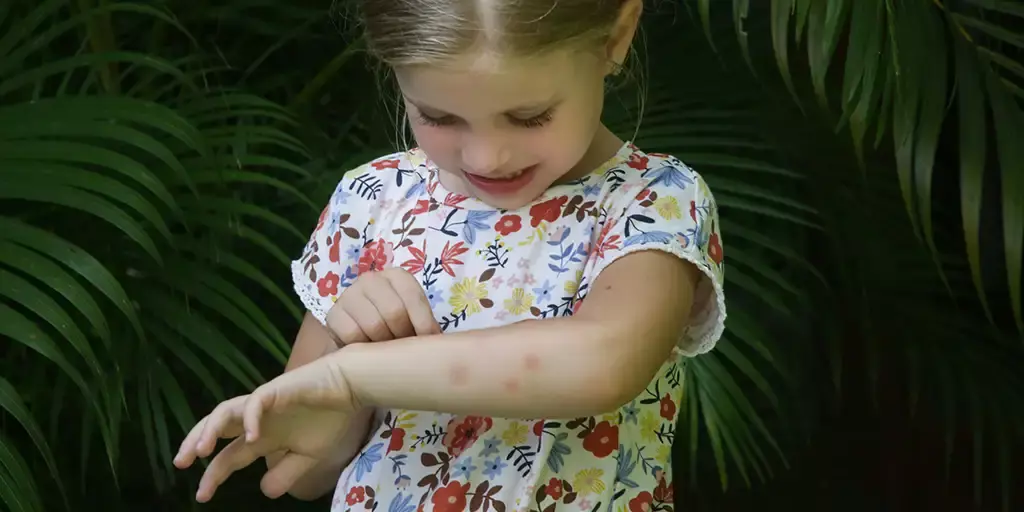Summer is an anxiously awaited time of the year, mostly for the numerous opportunities for outdoor activities. But as the weather warms up, insects abound – ready to bring misery to picnics, pool parties, or other outdoor pastimes. From mosquitoes and ants, to bees and wasps, learn how to win the bug battle with these tips for managing insect bites and stings in the summer.
Take Precautions Against Pests
The best way to avoid being bitten or stung by insects is to take preventative measures against them. Bugs like mosquitoes can carry diseases to humans, so preventing mosquito bites is important not just to avoid uncomfortable bumps, but in preventing infections as well. Applying bug repellents containing DEET or essential oils diluted to a safe level has been proven to deter biting insects like mosquitoes. This is especially important during the hours when these flying menaces are most active around dawn and dusk. Mosquito netting over baby carriers and strollers helps protect infants that are sensitive to topical repellents.
For around your home, large outdoor fans strategically placed around sitting areas can also help ward off flying insects of all varieties. Remove standing water in flower pots, bird baths, and gutters where mosquitoes breed. Use screens in windows and doorways, and consider having your home or premises sprayed with commercial or natural pesticides to reduce the number of insects in your home.
Exercise caution when lifting rocks or timber, or when hiking through wooded areas. Pests like spiders and scorpions often hide out under rocks or secluded areas, and can bite or sting when provoked. Ticks lie in wait on the underside of leaves, blades of grass, or in other vegetation, and can easily hitch a ride as your body brushes up against their hiding places. Bee hives can also be found in surprising places, so watch out for signs of bees under the baseboards or eaves of outbuildings.
Know Your Enemies
While you may not want to keep these enemies close, you do want to know how to identify the common biting and stinging insects in your area. People may respond to insect bites differently, depending on the type of insect that dealt the blow. For example, mosquitoes usually leave an itchy, red, raised bump after delivering their bite, while fleas typically leave a trail of small, itchy bumps. Wasps and hornets may sting repeatedly, while bees deliver just one blow, leaving their stinger behind as they pull away.
Knowing which insect has bitten or stung you also helps healthcare providers with your treatment plan should you need to seek urgent care. Spider bites in particular should be monitored closely, and the offending bug should be captured and presented for identification if possible. Brown recluse and black widow spiders are the two main species that pose a risk to humans in the United States – if you suspect that the bite in question is from either of these, it’s important to seek medical attention right away.
If you’re unsure of what type of bug has bitten or stung you, the location of the discomfort may give you a clue as to what insect may have caused it. Mosquitoes and biting flies will target exposed skin, while chiggers, ticks, and fleas lie in wait in vegetation – usually inflicting their bites on the lower legs and capable of crawling under pant legs. Chiggers may also travel farther upward and leave bites in creases of the skin or under the waistbands of clothing. Ant bites and scorpion stings are common in activities like gardening when bare hands or feet may be exposed and objects like rocks and plants are being lifted.
Address Bites and Stings Quickly
Acting swiftly after sustaining an insect bite or sting will help reduce the discomfort to follow. If you sustain a sting or bite from an insect, remove any stingers (if applicable), and wash the affected area with soap and water. Apply cool compresses to help with itching and swelling. Ice packs applied for 10-15 minutes at a time will help to numb the area and reduce the urge to scratch. Over-the-counter remedies like antihistamines or topical hydrocortisone creams may provide relief from itching and swelling, and calamine lotion helps soothe irritated skin. Aloe vera gel, properly diluted tea tree or lavender oil, and even honey can be applied topically to promote healing and decrease the intensity of pain or itchiness.
As tempting as it may be, it’s important to refrain from scratching insect bites and stings. Scratching irritates the skin and invites infection into the affected area. Stings and bites themselves are also aggravated by scratching, which prolongs their healing time. Any bites that don’t improve with over-the-counter remedies, or that continue to increase in size and pain should be evaluated by a medical professional.
Monitor for Allergic Reactions
In some individuals, insect bites and stings can elicit a severe allergic response known as anaphylaxis. Anaphylaxis requires immediate medical attention. Symptoms of anaphylaxis from insect stings and bites include:
- Hives
- Swelling of the face or throat
- Dizziness
- Rapid heartbeat
- Nausea and vomiting
This type of response is most commonly associated with bee stings, but may also accompany stings from wasps, hornets, or scorpions.
Get Help from Xpress Wellness Urgent Care
Bugs are a common disturbance during the summer months, but they don’t have to put a damper on your day. If you or a loved one has a run in with these nuisances of nature, you can get relief fast from Xpress Wellness Urgent Care. With multiple locations across Oklahoma and Kansas, you’ll be able to receive prompt, professional treatment of insect bites and stings and get back to enjoying your outdoor activities. We have experienced providers for both adults and children, and you can check-in online to save time in the waiting room. So don’t let bugs win the battle – with Xpress Wellness Urgent Care on your side, you’ll equip yourself with the care and knowledge needed to win the war on insect bites and stings.



